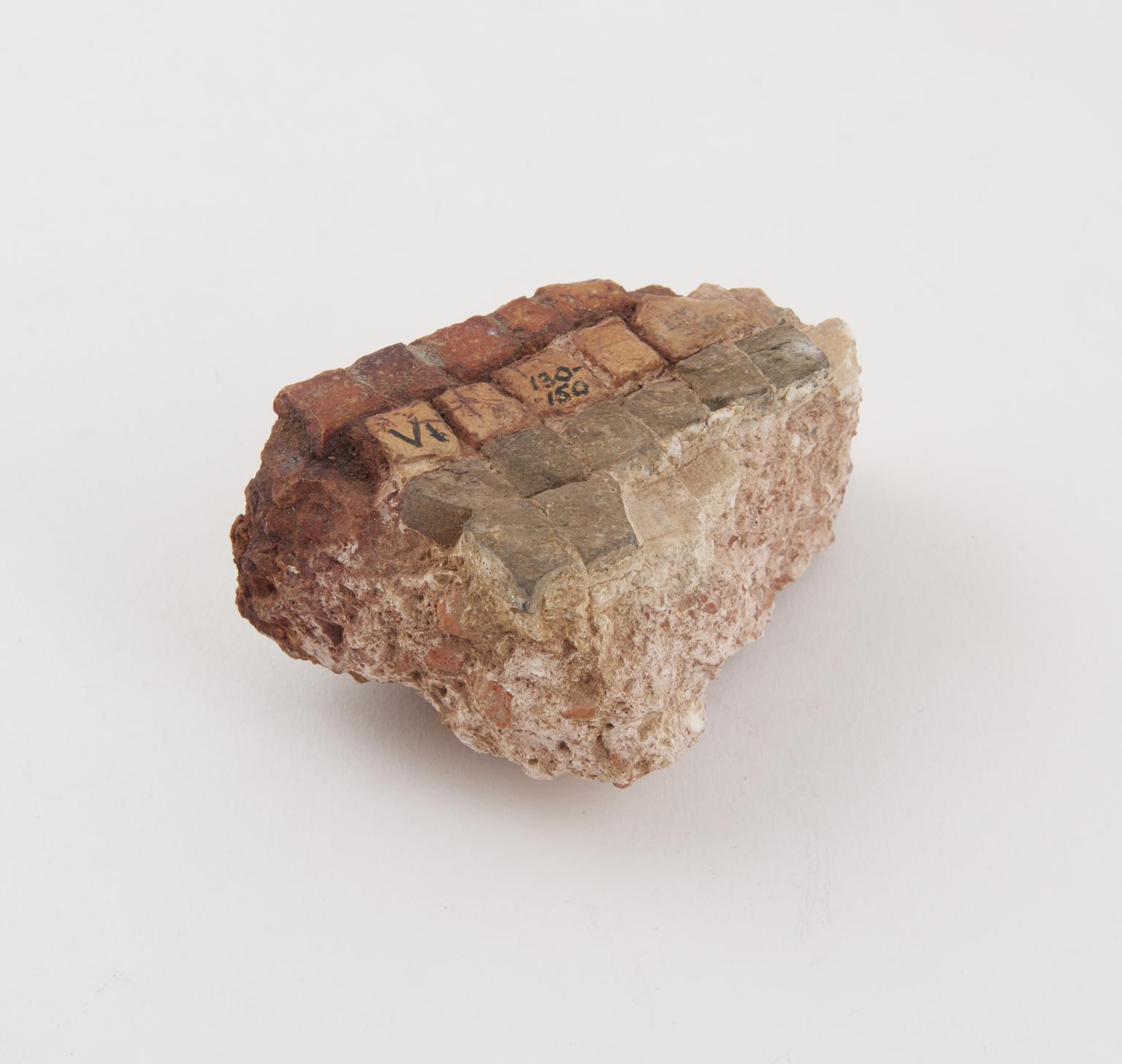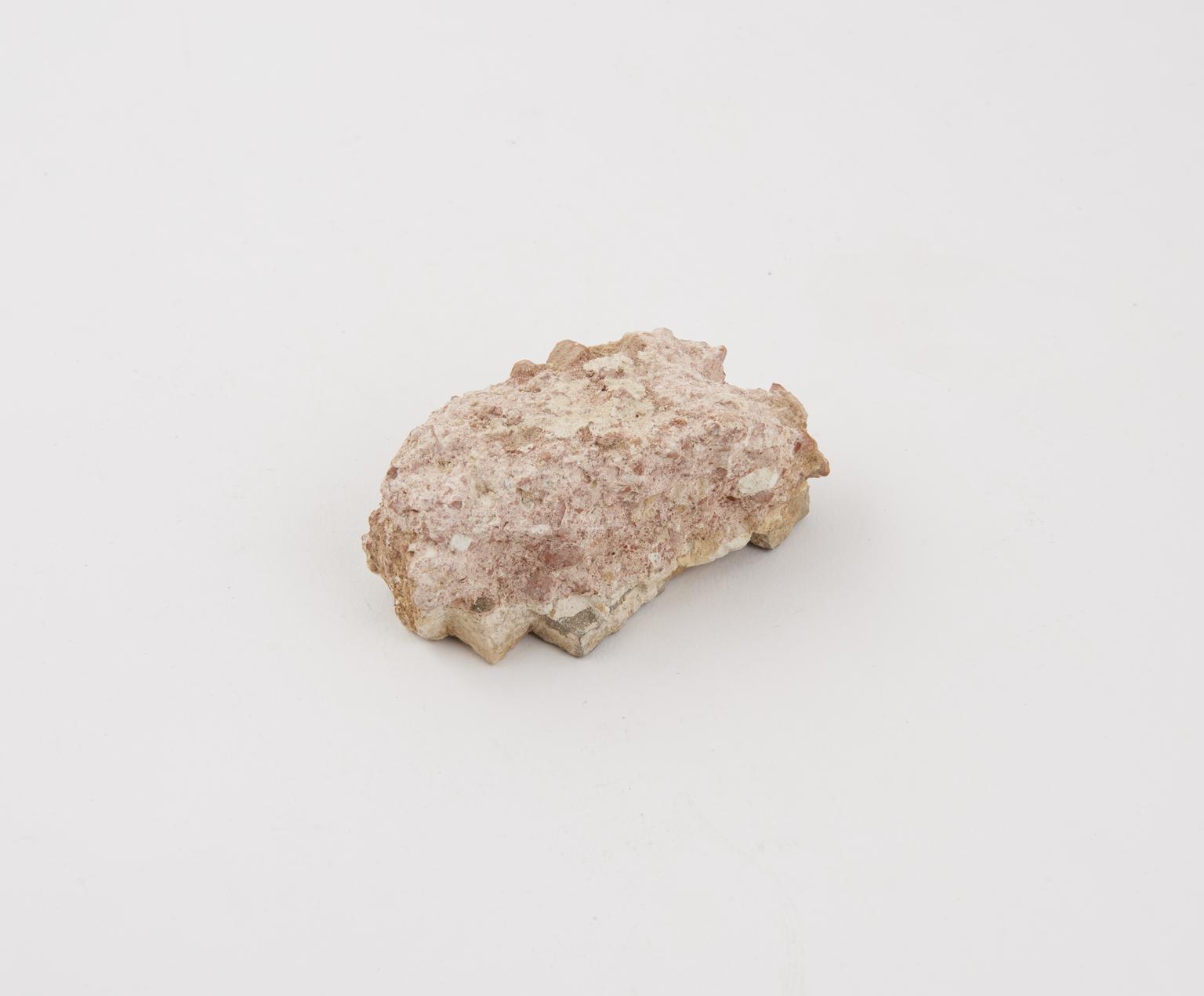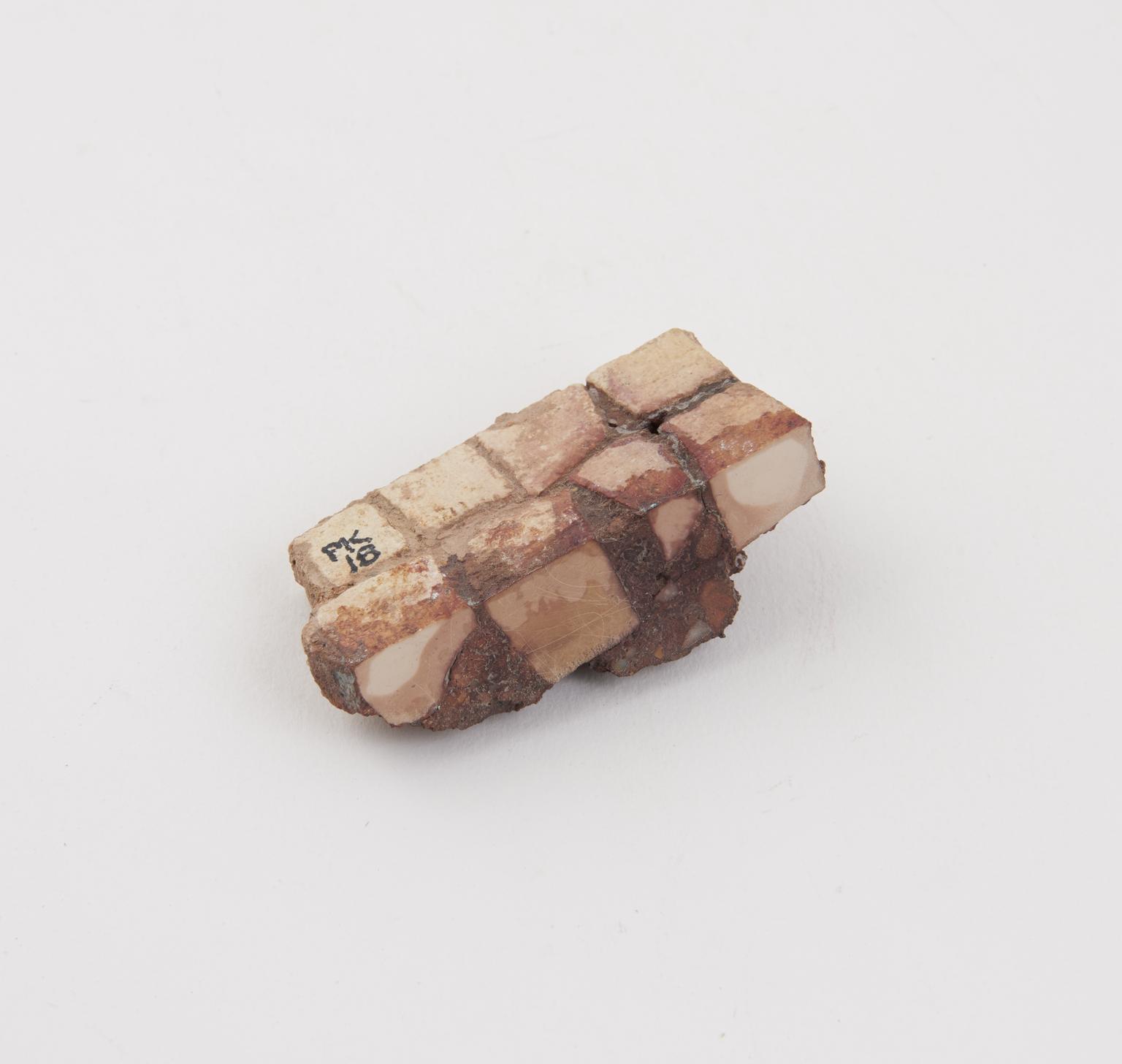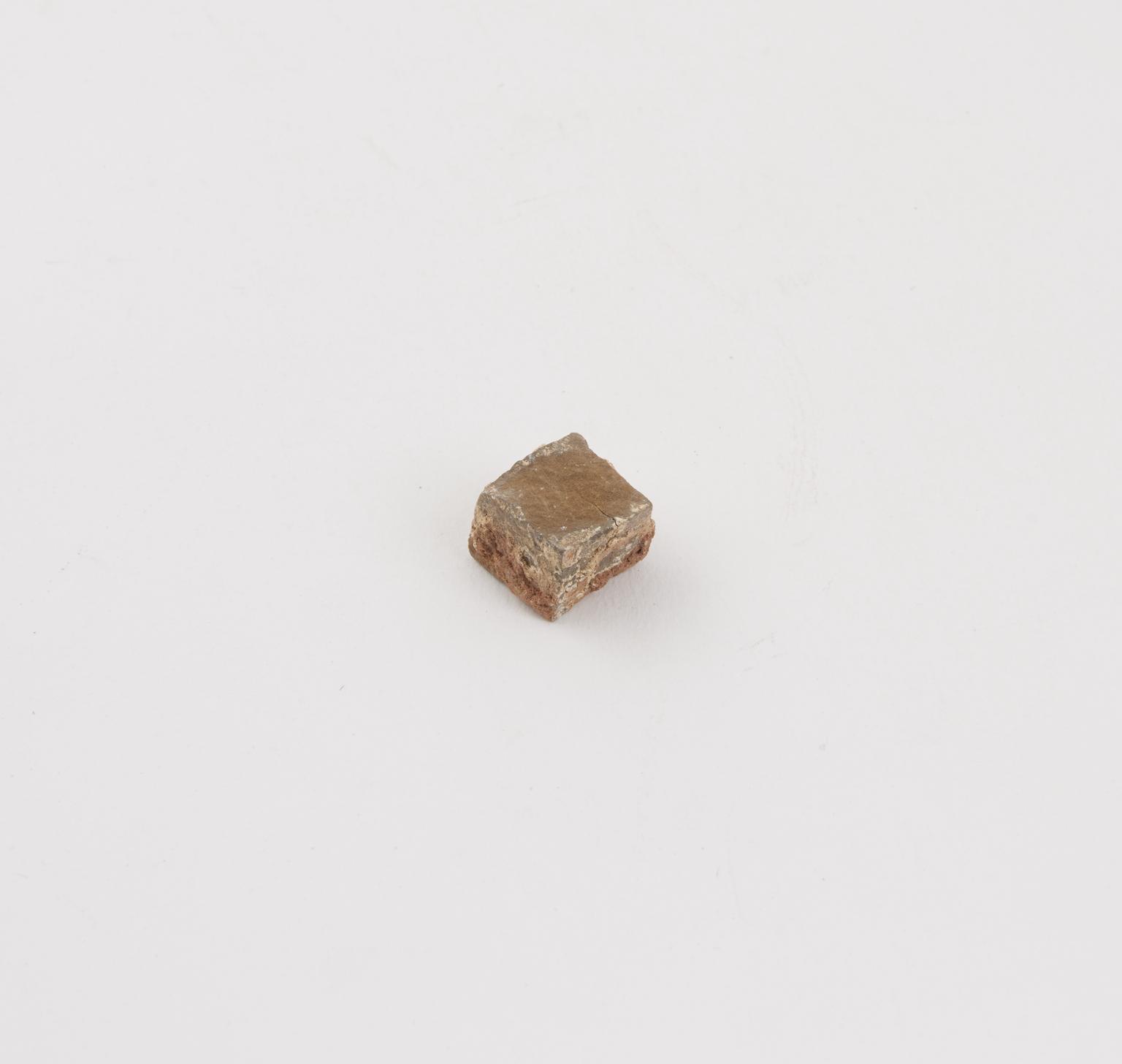
Roman mosaic fragments, 130-150 AD
Roman mosaic fragments, 130-150 AD
Specimens (3) of mosaic faced Roman concrete. 130-150 A.D. Mosaic is a technique for decorating floors and walls in which square or rectangular pieces of stone, glass or ceramic of consistant size, known as tesserae are set in a mortar. It developed from the use of pebbles to make decorative pavements, in which patterns were produced using stones of varying colours and sizes.The Romans used mosaic pavements in public buildings and private villas.Throughout the Roman Empire local stones were used supplemented by some imported pottery, glass and brightly coloured stone.

Roman mosaic fragments, 130-150 AD

Roman mosaic fragments, 130-150 AD

Roman mosaic fragments, 130-150 AD

Roman mosaic fragments, 130-150 AD